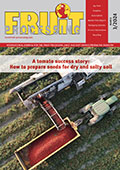Revision of IFU method #66
This method serves to determine the acetic acid content of a fruit and vegetable juices & purees. Provided that it meets characteristic performance, this enzymatic method can also be carried out using an automatic analyser.

Determination of Acetic Acid (enzymatic method)
This method has been revised and has been loaded onto the IFU website. It now includes precision data.
General information
This method serves to determine the acetic acid content of a fruit and vegetable juices & purees. Provided that it meets characteristic performance, this enzymatic method can also be carried out using an automatic analyser.
Principle
Acetic acid (acetate) is converted in the presence of the enzyme acetyl-CoA synthetase (ACS) with adenosine-5′-triphosphate (ATP) and coenzyme A (CoA) to acetyl-CoA.
Acetyl-CoA reacts with oxaloacetate to citrate in the presence of citrate synthase (CS).
The oxaloacetate required for reaction (2) is formed from malate and nicotinamideadenine dinucleotide (NAD) in the presence of malate dehydrogenase (MDH) (3). In this reaction NAD is reduced to NADH.
The determination is based on the formation of NADH which is measured by the increase in absorbance at 340, 334 or 365 nm. Since a preceding indicator reaction is used, the amount of NADH formed is not linearly proportional to the acetic acid concentration.









